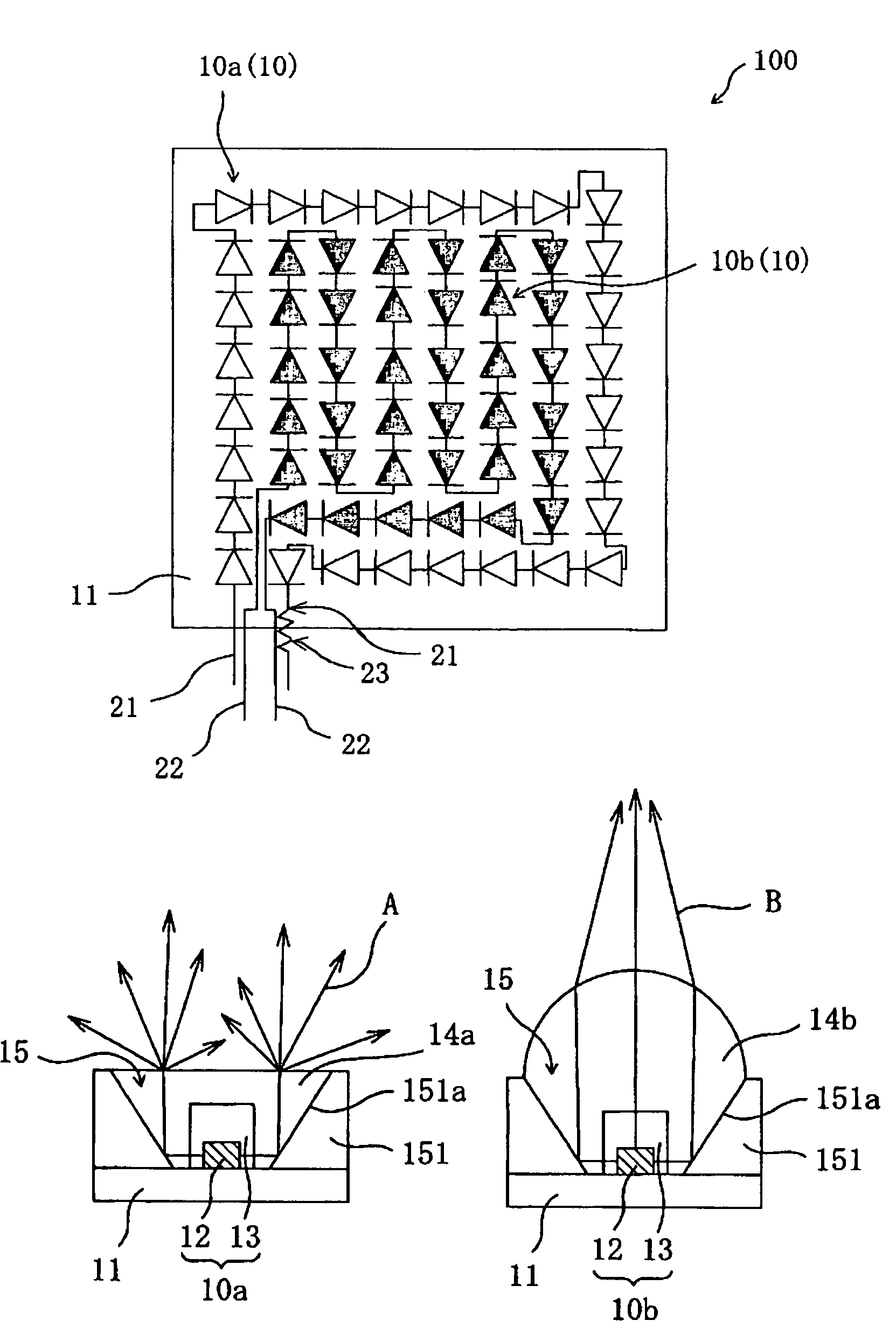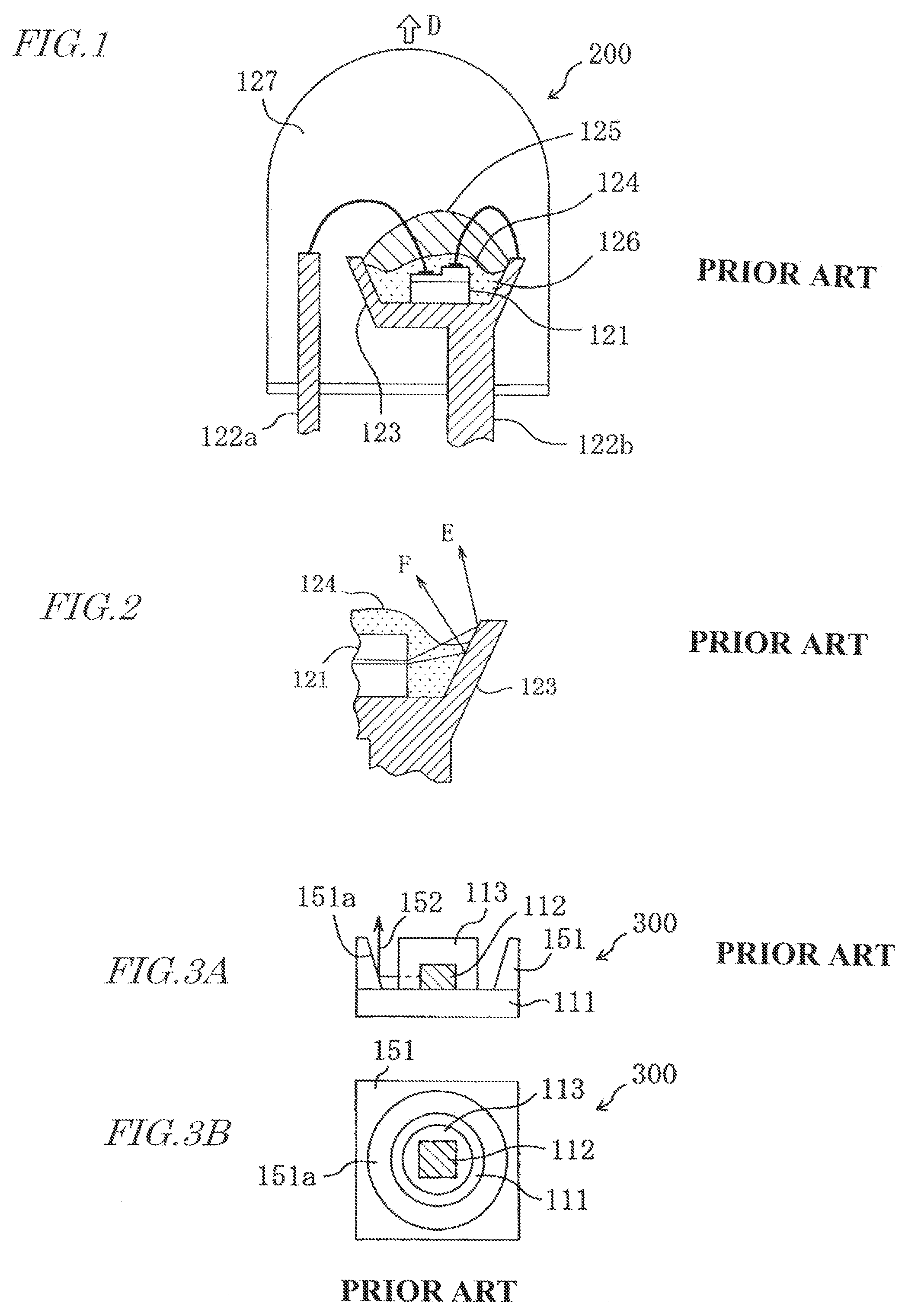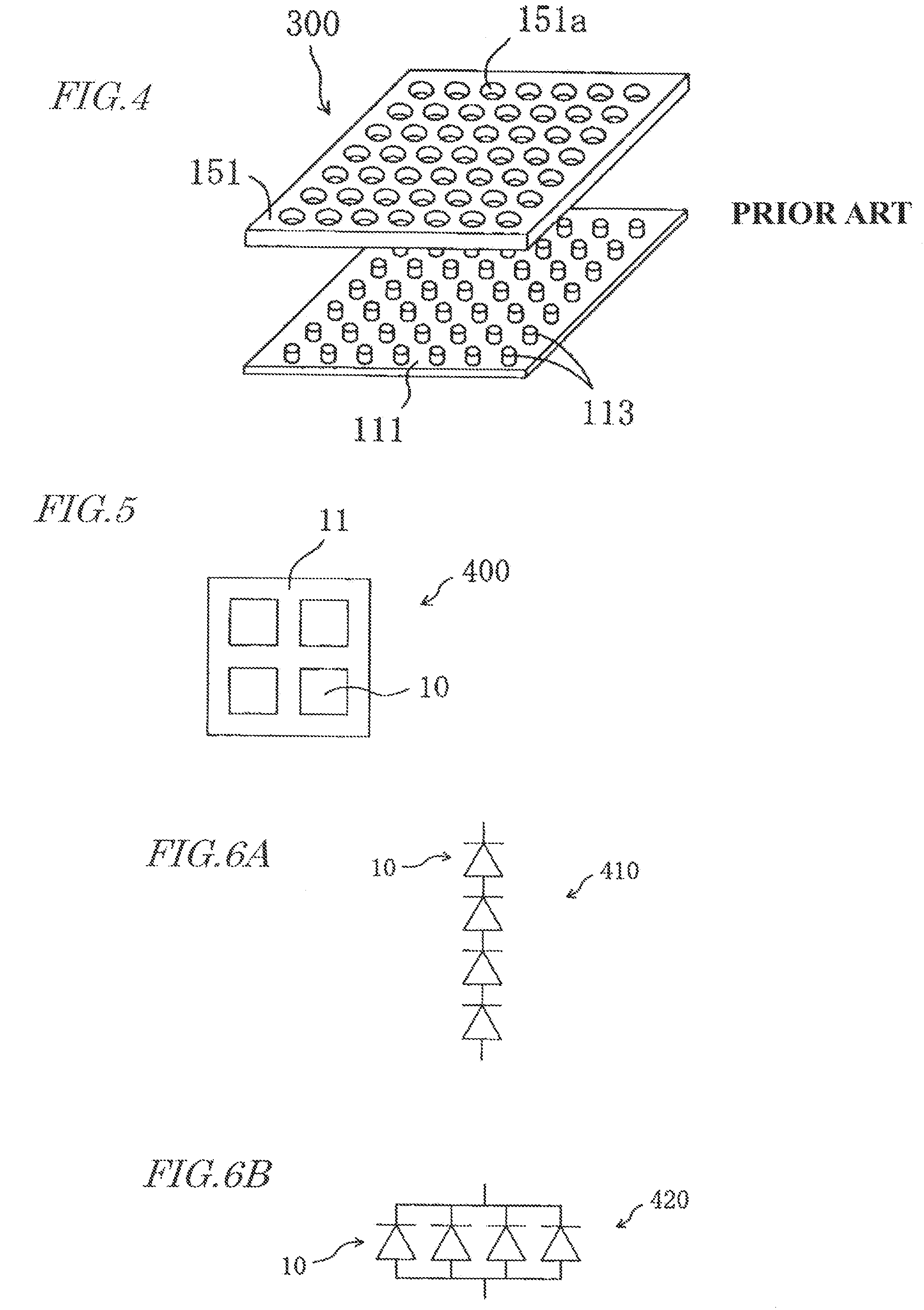LED lamp
a technology of led lamps and lampshades, applied in the field of led lamps, can solve the problems of easy production of color unevenness, inevitably produced color unevenness, white light, etc., and achieve the effect of reducing glar
- Summary
- Abstract
- Description
- Claims
- Application Information
AI Technical Summary
Benefits of technology
Problems solved by technology
Method used
Image
Examples
embodiment 1
[0063
[0064]First, an LED lamp 100 according to a first specific preferred embodiment of the present invention will be described with reference to FIGS. 10 and 11.
[0065]FIG. 10 schematically shows an arrangement for the LED lamp 100. As shown in FIG. 10, the LED lamp 100 includes a substrate 11, a plurality of LEDs 10 arranged two-dimensionally on the substrate 11, and an interconnection circuit 20 that is electrically connected to the LEDs 10.
[0066]The LEDs 10 make up a cluster of LEDs that are densely arranged two-dimensionally. The LEDs 10 included in that LED cluster are roughly classified into the two groups. Specifically, a first group consists of the LEDs 10a that are located in the outside portion of the cluster, while a second group consists of the LEDs 10b that are located in the inside portion of the cluster.
[0067]The interconnection circuit 20 of this preferred embodiment includes a first interconnection pattern 21 and a second interconnection pattern 22, which is provide...
embodiment 2
[0101
[0102]Hereinafter, an LED lamp according to a second specific preferred embodiment of the present invention will be described.
[0103]In the LED lamp 100 of the first preferred embodiment described above, the amount of the light emitted from the outer LEDs 10a is controlled appropriately, thereby reducing the glare effectively. In this preferred embodiment, an arrangement for further reducing the glare is adopted.
[0104]FIGS. 22A and 22B schematically illustrate a configuration for a lens 14a that covers the outer LED 10a and a configuration for a lens 14b that covers the inner LED 10b, respectively. As shown in FIGS. 22A and 22B, in this preferred embodiment, the inner lens 14b has a lens structure that forms a narrower luminous intensity distribution than the outer lens 14a does. By adopting such an arrangement, even if the amount of the light emitted from the outer LEDs 10a has been decreased, it is harder for the light emitted from the inner LEDs 10b to diffuse outward due to ...
PUM
 Login to View More
Login to View More Abstract
Description
Claims
Application Information
 Login to View More
Login to View More - R&D
- Intellectual Property
- Life Sciences
- Materials
- Tech Scout
- Unparalleled Data Quality
- Higher Quality Content
- 60% Fewer Hallucinations
Browse by: Latest US Patents, China's latest patents, Technical Efficacy Thesaurus, Application Domain, Technology Topic, Popular Technical Reports.
© 2025 PatSnap. All rights reserved.Legal|Privacy policy|Modern Slavery Act Transparency Statement|Sitemap|About US| Contact US: help@patsnap.com



